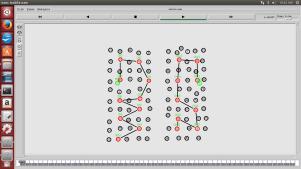ISA Transactions ( IF 6.3 ) Pub Date : 2021-06-25 , DOI: 10.1016/j.isatra.2021.06.027 Sercan Yalçın 1 , Ebubekir Erdem 1

|
Using mobile sink increases the coverage time and energy expenditure when there is a burst traffic condition in wireless sensor networks (WSNs). Hence, it is essential to handle burst traffic using mobile sinks in an energy-efficient mobility manner. In most studies, mechanisms of the clustering and routing have not taken into account burst traffic. In fact, the number of studies with integrated mobile sink nodes, burst traffic awareness, multi-criteria cluster head (CH) selection, and mobile sink routing is negligible. For this purpose, a novel burst traffic awareness adaptive mobility scheme is proposed based on heterogeneous clustered WSNs, namely Burst Traffic Awareness-Mobility Model (BTA-MM). In the proposed scheme, the network area is first divided into two cluster groups. The CH selection is performed for each round by the average residual energy an d node load, taking into account the network coverage. An adaptive Gauss–Markov-burst traffic combination model is proposed in the study. In the proposed model, the mobile sinks collect all data in a single-hop communication as soon as they join the coverage intersection points (CIPs) of the CHs. The mobility model utilizes the adaptive minimum-weighted cost of the nodes. Once the burst packets are perceived in a CH, the data packets are backed up on the nearest and highest energy node in the cluster. Then, the mobile sink suddenly updates its trajectory towards the node, including the burst data traffic. Performance analysis of the proposed scheme was performed in NS-2 simulation environment. The most notable of the performance results is that the proposed method increased the network lifetime 42.5% more than any other method and also reduced the control overhead and average mobile path length by 72.5% and 35.9%, respectively. Also, the simulation results showed that the proposed method significantly reduced the average energy consumption 34.2% more than any other method, and increased the packet delivery rate 4.5% more than any other method, even in burst traffic.
中文翻译:

BTA-MM:基于突发流量感知的自适应移动模型,具有用于异构无线传感器网络的移动接收器
当无线传感器网络 (WSN) 中存在突发流量情况时,使用移动接收器会增加覆盖时间和能量消耗。因此,必须以节能的移动方式使用移动接收器来处理突发流量。在大多数研究中,聚类和路由机制没有考虑突发流量。事实上,集成移动宿节点、突发流量感知、多标准簇头(CH)选择和移动宿路由的研究数量可以忽略不计。为此,提出了一种基于异构集群WSNs的突发流量感知自适应移动方案,即突发流量感知-移动模型(BTA-MM)。在所提出的方案中,首先将网络区域划分为两个集群组。考虑到网络覆盖范围,通过平均剩余能量和 d 节点负载为每一轮执行 CH 选择。研究提出了一种自适应高斯-马尔可夫-突发流量组合模型。在所提出的模型中,移动接收器一旦加入 CH 的覆盖交叉点 (CIP),就会在单跳通信中收集所有数据。移动模型利用节点的自适应最小加权成本。一旦在 CH 中感知到突发数据包,数据包就会备份到集群中最近且能量最高的节点上。然后,移动信宿突然更新其到节点的轨迹,包括突发数据流量。在 NS-2 仿真环境中对所提出的方案进行了性能分析。最显着的性能结果是,所提出的方法比任何其他方法增加了 42.5% 的网络寿命,并且还分别减少了 72.5% 和 35.9% 的控制开销和平均移动路径长度。此外,仿真结果表明,即使在突发流量中,所提出的方法也比任何其他方法显着降低了 34.2% 的平均能耗,并且比任何其他方法提高了 4.5% 的数据包传递率。











































 京公网安备 11010802027423号
京公网安备 11010802027423号